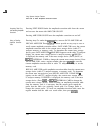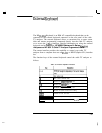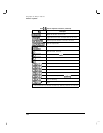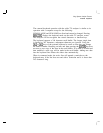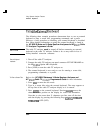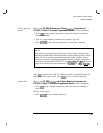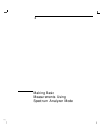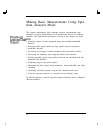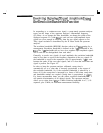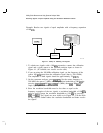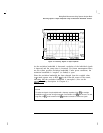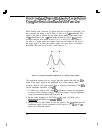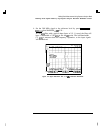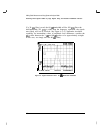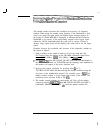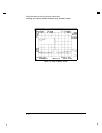
I
-
I
-
Resolving
Signals
of
Equal
Amplitude
Using
the
Resolution
Bandwidth
Function
In responding to a continuous-wave signal, a swept-tuned spectrum analyzer
traces out the shape of the spectrum analyzer’s intermediate frequency
(IF) filters. As we change the filter bandwidth, we change the width of the
displayed response. If a wide
hlter
is used and two equal-amplitude input
signals are close enough in frequency, then the two signals appear as one.
Thus, signal resolution is determined by the IF filters inside the spectrum
analyzer.
The resolution bandwidth (RES BW) function selects an IF tilter setting for a
measurement. Resolution bandwidth is defined as the 3
dB
bandwidth of the
lilter.
The 3
dB
bandwidth tells us how close together equal amplitude signals
can be and still be distinguished from each other.
Generally, to resolve two signals of equal amplitude, the resolution bandwidth
must be less than or equal to the frequency separation of the two signals. If
the bandwidth is equal to the separation a dip of approximately 3
dB
is seen
between the peaks of the two equal signals, and it is clear that more than one
signal is present. See Figure 4-2.
In order to keep the spectrum analyzer calibrated, sweep time is
automatically set to a value that is inversely proportional to the square of
the resolution bandwidth. So, if the resolution bandwidth is reduced by a
factor of 10, the sweep time is increased by a factor of 100 when sweep time
and bandwidth settings are coupled. (Sweep time is proportional to
l/BW’.)
For fastest measurement times, use the widest resolution bandwidth that
still permits discrimination of all desired signals. The spectrum analyzer
allows you to select from 1
kHz
to 3 MHz resolution bandwidth in a 1, 3, 10
sequence, plus 5 MHz, for maximum measurement flexibility.
4-3



